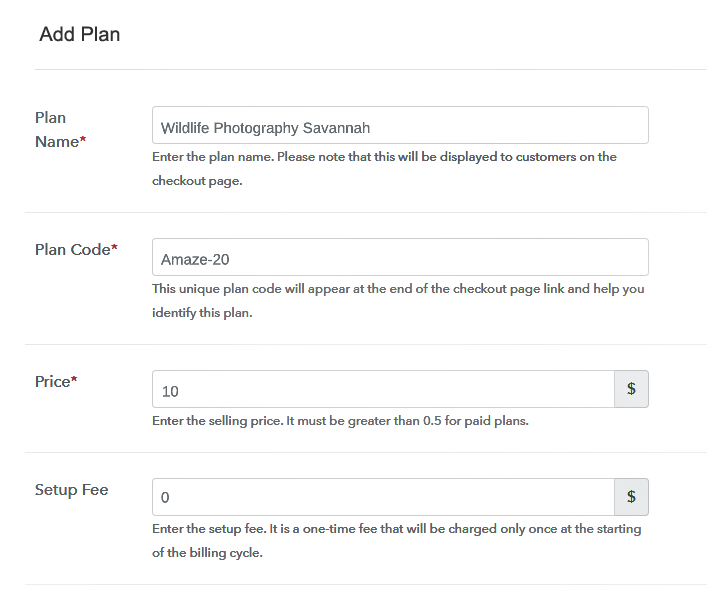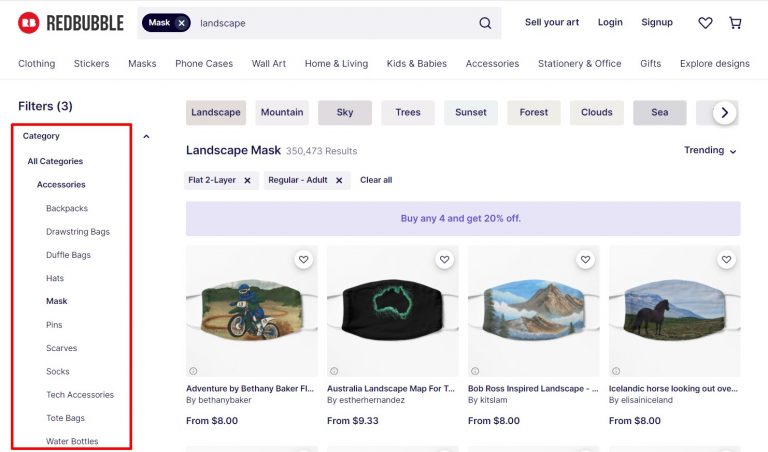If you’re a photographer looking to monetize your work, selling your photos to Getty Images can be a lucrative opportunity. Getty is a respected name in the stock photography industry, serving a massive client base that includes businesses, publications, and creative projects all over the globe. In this guide, we’ll walk you through the ins and outs of selling your photos to Getty, covering everything from submission to licensing. Let’s dive in!
Understanding Getty Images and the Market

Before you start considering how to sell your photos to Getty, it’s essential to understand who they are and how the market works. Getty Images is one of the largest and most recognized stock photo agencies in the world. Established in 1995, Getty offers a vast collection of images, videos, and music that cater to diverse industries, including marketing, advertising, and journalism.
Let’s break down a few key points about Getty Images:
- Market Reach: Getty Images has a global presence. Their client base includes major brands, advertising agencies, and media outlets, which means that your work could reach a worldwide audience.
- High Standards: Getty is known for its quality. To be accepted as a contributor, your photos must meet their high standards for clarity, composition, and relevance.
- Types of Content: Getty accepts various types of imagery—from editorial photos capturing real-world events to creative stock photos intended for commercial use. Understanding the differences between these categories can inform your submission strategy.
- Licensing Models: Getty uses a “royalty-free” (RF) model, meaning that clients can use your images without paying you each time they do, but they do pay a one-time fee for the image usage. They also offer rights-managed (RM) licenses for specific uses.
When selling your photos to Getty, it’s vital to keep the market trends in mind. The stock photo industry is constantly evolving, influenced by factors such as:
- Social Media Trends: As social media continues to grow, the demand for fresh and engaging images increases. Photos that resonate with current trends can sell particularly well.
- Technological Advances: With the advent of smartphones and high-quality cameras, more people are taking photos. However, this also means increased competition. Your unique perspective and style are what will make your work stand out.
- Consumer Behavior: Understanding what types of images clients are looking for can give you an edge. Research popular categories on Getty's platform to guide your photography.
Additionally, don’t ignore the importance of keywords and descriptions when uploading your photos. Effective use of keywords can improve your images' visibility in the Getty search, ultimately leading to increased sales.
In conclusion, selling photos to Getty Images requires an understanding of the company, the market, and the competitive landscape. By familiarizing yourself with these elements, you can better prepare your submissions and increase your chances of success. Stay tuned for more insights on the submission process and best practices for licensing your images!
Also Read This: Step-by-Step Guide to Selling on iStock From Sign-Up to Making Money
3. Preparing Your Photos for Submission

So, you've decided to sell your photos to Getty Images—exciting! But before sending your masterpieces off into the photographic ether, there are several key steps to ensure your images are perfectly polished and ready for submission. Here’s how you can prepare:
- Understand Getty's Requirements: Getty Images has specific technical requirements for submissions. Make sure your photos are at least 4 megapixels, and of high quality without any artifacts or blurriness. Check their guidelines for acceptable formats (like JPEG or PNG) before uploading.
- Edit with Care: Post-processing is essential. Use software like Adobe Lightroom or Photoshop to enhance your images. Focus on adjusting the lighting, contrast, and colors. Just remember, while editing is important, overdoing it can make your photos look unrealistic. Aim for a natural touch!
- Resolution Matters: High-resolution images are more likely to get accepted. Aim for images that are at least 300 dpi at the size you want to sell. This is crucial for print sales, ensuring buyers can use your photos in various formats without sacrificing quality.
- Be Mindful of Composition: Great composition can enhance the selling potential of your images. Keep the rule of thirds in mind and avoid cluttered backgrounds. A well-composed photo is more likely to attract buyers’ attention.
- Add Relevant Metadata: Metadata is your friend! Before submitting, ensure your images are accompanied by descriptive titles, keywords, and captions. This will make it easier for potential buyers to find your photos. Think about what terms a buyer might use when searching for images related to your work.
- Stay Organized: Create folders for each shoot or collection. Proper organization not only makes the submission process smoother but also helps you track your work effectively. This will be invaluable as you build and expand your portfolio.
By taking the time to meticulously prepare your photos, you’re setting yourself up for success with Getty Images. Remember, your images represent your brand. Make them shine!
Also Read This: How to Sell Stock Photos on Getty Images: A Beginner’s Guide to Getting Started
4. Navigating the Submission Process

Now that your photos are prepped and ready, it’s time to tackle the submission process. While it might seem daunting, breaking it down into manageable steps can make everything feel a lot smoother. Here’s how to navigate the submission process to Getty Images effectively:
- Create an Account: Before submitting your photos, you'll need to create a contributor account on the Getty Images website. Fill out all required information, and don't forget to read through their contributor agreement so you understand the terms.
- Uploading Your Photos: Once your account is set up, start uploading your images. The platform allows bulk uploads, so take advantage of this by submitting multiple photos at once. Just remember to double-check each photo’s compliance with Getty's quality standards as you're uploading.
- Adding Metadata: As you upload, it's crucial to enter all relevant metadata for each photo. This includes selecting appropriate categories, adding keywords, and writing compelling captions. This metadata helps buyers find your images, so make it as detailed and relevant as possible.
- Licensing Options: Getty Images offers various licensing options—royalty-free, rights-managed, and editorial, to name a few. Understand the differences between these licenses and select the most suitable one for your images. Keep in mind that the choice of license can significantly affect your earnings.
- Review and Submit: Before hitting that submit button, go through your submission one last time. Ensure everything is in order—double-check your metadata, and make sure all photos meet Getty’s guidelines. Once satisfied, submit your photos!
- Be Patient: After submission, remember that there may be a waiting period. Getty’s review process can take time as they evaluate each photo for quality and market fit. Use this time to continue shooting and editing new content!
By navigating the submission process with careful attention to detail, you’re increasing your chances of getting your images accepted. Good luck, and may your photos find their way into the world!
Also Read This: Making Money from Shutterstock Images: Exploring Revenue Opportunities
5. Understanding Licensing Options

When it comes to selling your photos to Getty Images, understanding the licensing options is crucial. Getty offers a variety of ways for customers to use your images, and knowing these can help you position your work effectively for better sales.
There are primarily two types of licenses you'll encounter:
- Royalty-Free (RF): Customers can use your images multiple times for various projects without paying additional fees after the initial purchase. This is a popular option because it provides flexibility for both buyers and sellers.
- Rights Managed (RM): This licensing method provides buyers with exclusive rights to use an image for a specific purpose, duration, and region. Pricing for RM licenses varies significantly depending on these factors, making it potentially more lucrative for you as a seller.
Additionally, Getty Images categorizes contents under different usage scopes, including:
- Editorial Use: Images that serve to illustrate news articles, blogs, and other editorial content. These images typically cannot be used for commercial advertising.
- Commercial Use: These images are intended for marketing, promotions, and advertising. They can lead to more revenue, but they also come with stricter licensing agreements.
Understanding these categories helps you to determine how to best position your photos and tailor your submissions. Keep in mind that customers are primarily looking for clear usage rights, so providing your images with a straightforward licensing explanation can enhance their appeal.
Finally, it's worth noting that Getty may have specific guidelines for different content types. Always check their submission guidelines to ensure your images fit the intended licensing category. The clearer you are about how your imagery can be used, the more likely you are to make sales!
Also Read This: Easy Steps to Cancel Your iStock Subscription
6. Best Practices for Increasing Sales
Now that you’re familiar with the submission process and licensing options, let's talk about how to maximize your sales through Getty Images. Here are some best practices that can help elevate your portfolio and ultimately increase your revenue:
- Build a Diverse Portfolio: Aim to capture a wide variety of subjects, themes, and styles. This can include landscapes, portraits, events, and conceptual imagery. A broader scope increases the chances of your work being discovered and purchased.
- Prioritize Quality Over Quantity: High-resolution, well-composed images are a must. Invest time in editing your photos to perfection. Remember, buyers look for images that can withstand scrutiny, so never compromise on quality.
- Keyword Optimization: Use relevant and specific keywords when uploading your images. Think about what potential buyers would search for. This increases the visibility of your work and improves the chances of it being found.
- Stay Current with Trends: Regularly browse Getty’s collection to understand which styles and subjects are currently trending. Adapting your shooting style to embrace these trends can give your portfolio a hefty boost.
- Network and Collaborate: Connect with other photographers, creatives, and industry professionals. Building relationships can result in valuable partnerships or even mentorships, which can lead to more sales opportunities.
Creating engaging social media content that links back to your Getty portfolio can also drive traffic. Consider sharing not just your images but stories behind them, challenges faced during shoots, or tips on photography. This personal touch can captivate potential buyers!
Lastly, be patient. Building a successful portfolio takes time and effort, but by employing these best practices, you’ll be well on your way to walking the path of successful photography sales on Getty Images.
Also Read This: How to Download Free Images from Getty Images Legally
7. Common Pitfalls and How to Avoid Them
Venturing into the world of stock photography can be incredibly rewarding, but it’s not without its challenges. Let’s discuss some common pitfalls you might encounter when selling your photos to Getty Images and how to steer clear of them.
1. Ignoring Quality Standards
Getty Images has very specific quality criteria. If your submissions consistently fall short, you might get rejected. To avoid this, always ensure your images are high resolution, well-composed, and properly exposed. Invest time in learning about photography rules, such as the rule of thirds or leading lines, and maybe even take a course to brush up on your skills.
2. Poor Metadata Practices
Metadata is crucial when it comes to getting your photos noticed. If you skimp on this part of the submission process, you could significantly limit your visibility. Make sure to:
- Use relevant keywords: Think like a buyer searching for your image.
- Write detailed descriptions: Explain what’s happening in the photo, its context, and how it could be used.
- Include model and property releases: This is essential for images featuring identifiable people or private properties.
3. Neglecting Trends
Stock photography trends change frequently. If you’re not attuned to what’s currently popular, you risk missing out on sales. Stay informed by:
- Following photography blogs and forums.
- Checking Getty's own curated collections.
- Surveying popular social media pages that showcase photography.
4. Not Understanding Licenses
One of the most complex aspects of selling photos through Getty is navigating the different licensing options. It’s essential to know the difference between Royalty-Free (RF) and Rights Managed (RM) licensing. Not grasping these concepts can lead to confusion about how your work is used and compensated. To avoid this, take the time to familiarize yourself with the licensing models Getty employs, and choose accordingly based on your work and your goals.
5. Failing to Promote Your Work
Just submitting to Getty is not enough. You also need to promote your portfolio to increase visibility and potential sales. Share your work through:
- Social Media Platforms (Instagram, Twitter, etc.)
- Your personal website or blog.
- Photography groups and communities.
8. Conclusion: Maximizing Your Success with Getty Images
As you embark on your journey to sell photos to Getty Images, remember that successful stock photography is a combination of art, strategy, and persistence. By understanding the platform, complying with guidelines, and avoiding common pitfalls, you can significantly enhance your chances of success.
Here’s a quick recap of vital steps to ensure you’re maximizing your potential:
- Prioritize quality: Always submit your best work.
- Be diligent with metadata: This is your tool for discoverability.
- Stay updated on trends: Keep your work relevant.
- Understand licensing: Choose wisely based on your business strategy.
- Market your work: Don’t wait for buyers to find you; be proactive.
Remember, building a successful stock photography portfolio takes time and effort. Keep learning, adapting, and improving your craft. With passion and persistence, you’ll find your place in the vibrant marketplace of Getty Images. Happy shooting!
 admin
admin








